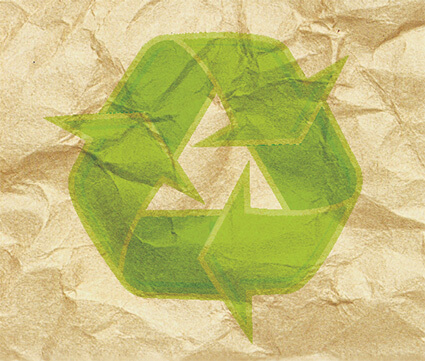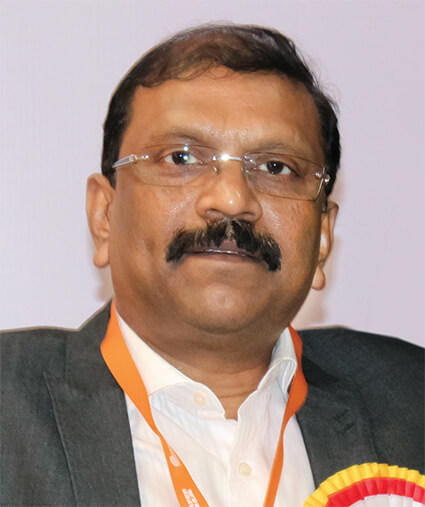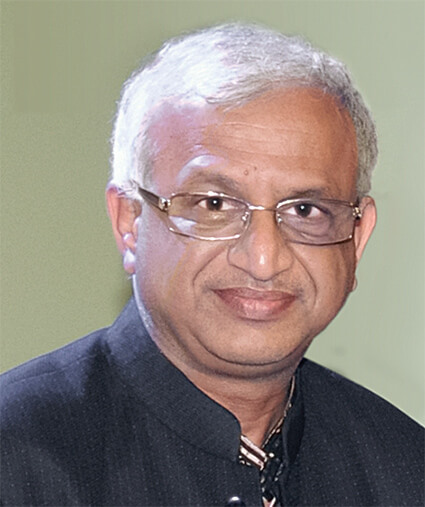
The 3rd Technical Conference on Pulp, Paper and Allied Industries and biannual exhibition – Paper Plus, took place at Chennai Trade Centre, Tamil Nadu from November 7 to 9, 2014. The three days affair saw numerous presentations along with showcasing of technologies, equipments, services, etc. Paper Mart remained a zealous participant throughout the event to scavenge every bit of usable information. Here is the sum up.
“Recycling-the future of paper industry” was the major theme at the Paper Plus conference and the debate participants tried dispelling myths associated with the practice by underlining its utility at the same time. Volumes of data, myriad of facts and a host of new trends were at the core of the discussion aimed at finding a consensus on recycling usage among the industry stakeholders. Raw material scenario was again at the helm inspiring more debate.

Recycling-The Future of Paper Industry
Giving a fine detailing about the prevailing stock of recycling industry in India, Mr. Anil Kumar, Sr. Vice President, Indian Agro & Recycled Paper Mills Association said, “Recycling in India is likely to develop further, but the industry largely depends upon virgin paper to be produced and recycled at the end only because there is no limitless recycling. Southern India is one of the major paper producing parts having mills using variety of raw materials like agro residues, wood and waste paper (recycled fiber).
“The consumption of paper and board in India is expected to grow over 20 million tonnes by 2020 from the present installed capacity of less than 13.5 million tonnes. Such growth has been envisioned presuming that Indian pulp, paper and allied industry is prepared to take up the future challenges, particularly on raw material. However, due to the shortage of fibrous raw materials such as wood and bamboo, many mills have started using waste paper as their major feed stock for paper manufacture.”
The ever-continuing utility of the paper in civil societies and its connectedness to a whole gamut of deforestation issues too formed many instances of reflection during speeches and debates. Paper as prerequisite of knowledge based society is deterrent to over-emphasis on the issue of deforestation. However, all the industries across the board, including paper industry, are sentimental over the issue of deforestation and strongly feel about the green initiatives.
Reflecting on the issue, Mr. Kumar said, “It is not possible to be dependent on forests for paper because no matter how much we talk about the acres of forests we have, in actuality all these lands are either destroyed, or are endangered now. It is rather unfortunate that not much has been done in this regard.”
Adding further on this note, he remarked, “We, as producers, manufacturers, technologists, and owners of paper, should feel extremely proud as we are producing something green. We are absolutely green industry irrespective of others criticizing us for destroying the forests.”
“It is a fact that till the human race exists, the paper utility will exist; and that every paper is recyclable contributing in the growth of the human race. Wherever, in parts of India or the world, the industry is flourishing, you will see that the greenery is maintained religiously. The economy is just a part, and the whole industry must conserve the most basic source that is the forest,” Mr. Anil Kumar declared.
Paper Industry: ‘Sun Rise’ of Indian Economy
The contribution of paper industry in the overall Indian economy was duly estimated during discussions. The paper as a progress vehicle for civilized society and the paper industry as an engine of national growth were some of the salient points found common in every speech. Moreover, meager per capita paper consumption and the demand driven by boom in organized retail by virtue of e-commerce also were constituents of discussions.
Commenting on the economic participation of the paper industry in the Indian economy and the changes taken place in the industry over the years, Mr. R. Krishnaswamy, Chairman and Managing Director, Sripathi Paper and Boards Private Limited said, “The paper industry plays a very vital role in the industrial growth of the country and also provides a necessary medium to propel our knowledge based economy forward in the new millennium. In 2011, the Indian paper industry was lauded as a ‘Sun Rise’ industry by every agency in India. According to CRISIL, the per capita packaging consumption in India is 1 kg, which is very meager if compared to 14 kg of Australia and 15 kg of Japan. The data is according to the report in 2011. The consumption might have increased a bit since then, but still it’s scant and has much scope for growth.
“The paperboard demand growth is strongly linked to industrial production, and is driven by growth in organized retail, pharmaceuticals, textiles, food, and FMCG products. Here, I have a strong faith in e-Commerce, which will be a prime driver for the packaging segment. The writing and printing (W&P) paper growth is expected to be 7 percent in the coming five years owing to the improvement in economic growth in long term perspective.

Economic Reforms, Paper Industry and Unreliable data
Connecting the changes taking place in the paper industry with the economic reforms of ’90s, Mr. R. Krishnaswamy reflected, “I am taking reference of the Planning Commission of India and its report in 2011 as no stringent reports was made after that. India began its program of economic reform in 1991, which gradually freed the industrial sectors from an administered license regime. In July 1991, the government decided to de-license the paper industry which became a major motivation for the growth of the industry. By 2011, there were 759 pulp and paper mills with an installed capacity of 12.7 million tonnes producing around 10.11 million tonnes of paper/paper board and newsprint out of an annual consumption of around 11.15 million tonnes. Though, as said earlier that the data is not been updated, this ratio may have touched 15 to 16 million tonnes of annual consumption.”
Highlighting the variety wise production of raw materials from different segments of the industry, Mr. Krishnaswamy said, “The agro based segment produces 1.5 million tonnes of packaging, 0.73 million tonnes of newsprint. The recycled segment produces 3.15 million tonnes of packaging, 0.81 million tonnes of W&P and 0.76 million tonnes of newsprint. The wood segment produces 2.36 million tonnes of W&P, packaging is 0.3 million tonnes. This clearly shows the growth in the packaging and the recycling which is a very healthy sign.”
The data collecting and disseminating agencies are not updating their records consistently and outmoded statistics are failing in the purpose it meant to serve. Brooding on the data scenario, Mr. Krishnaswamy further added, “As regards to projected consumption and production of paper, the consumption forecast is much higher than the production in coming years. However, to add here, all these forecast data by CRISIL, the Planning Commission, and the Department of Industrial Policy and Promotion are based on the old data which are not helpful in giving any true picture.
“There is lack of scientific method to analyze the market of a particular region and the capacity of production therein. Besides, we have no mechanism at the association level itself to locate these regions in time according to the size and scope of growth. Once we can locate these regions, data may be collected and an industry may be set up accordingly; based on the updated records we can have clear assessment of the industry’s infrastructure and the forecast of growth annually. The key here is update and analyze.”
Speaking over the capacity of recycling industry, Mr. Krishnaswamy said, “The capacity is overflowing in all the segments. In the four southern states viz. Tamil Nadu, Andhra Pradesh, Karnataka and Kerala constituting 25 percent of the economy, the capacities of duplex board is 70,000 tonnes per month, writing paper is at 77,500 tonnes and kraft is at 200,000 tonnes per month. Due to the huge capacity (higher than the demand), lots of imbalance has occurred resulting into break-down where many companies had closed down.”
Citing the current scenario of the industry, he added, “According to the report by Emkay (based on virgin paper mills), the Indian industry has grown at a CAGR of 7 to 8 percent. Given the country’s low per capita consumption of paper, it is expected that the industry will continue to grow at a similar pace in the coming years. According to the 12th plan report of the Planning Commission, the paper consumption in India, as per baseline projections, is expected to increase from 10.1 million tonnes in FY-11 to 23.5 million tonnes in FY-27. Also, the increase in capex and the balance sheet leverage continued to remain elevated. On the other hand, the raw material cost has increased significantly from 28 percent to 42 percent over the FY-09-12. The EBITDA margins have contracted from 23.4 percent in FY-09 to 15.9 percent in FY-13. This was due to the buildup in competitive intensity driven by moderation in demand during the crisis years and capacity expansions after 1990.
The challenges and the problems faced by recycling industry in particular, and paper industry in general also surfaced during discussions. Enumerating problems and connected effects on the industry, Mr. Krishnaswamy remarked, “The recycled paper industry consists of small mills, and all the above issues have a more severe impact on them. The raw material cost in the recycled paper industry has increased from 48 percent to the back-breaking level of 62 percent of sales value along with its attendant problems like higher acquisition cost, storage cost, high interest rates, etc. Due to poor collection, we are depending on import; we are sourcing almost 15 to 16 percent from foreign countries. Due to the dollar fluctuation, we used to run for cover in yesteryears being unable to withstand the dollar fluctuations. The EBITDA in this industry has contracted from 13 percent to 10 percent of sales value. This drop in internal generation has hampered debt-servicing obligations, and has forced several units to NPA category.
Impediments in the Way Ahead
“We are fighting for both raw materials and finished goods, where sometimes, unethical business means are adopted. This is an irony as our customers think we earn huge profits but this is just the opposite,” said Mr. Krishnaswamy.
“There is an overflow of finished goods and scrambling for consumer orders which lead to depreciation in the selling prices and credit discipline. The power scenario is another headache for the industry viz. power-cuts, low quality power, unavailability of machines and high prices. Tamil Nadu is the worst affected, if we see South India. Another factor is the huge shortage of skilled and trained man-power in the industry particularly in South India. “Brain-drain” is happening in the industry where the skilled and the learned wants to join MNCs, which leaves the lower clusters of workers, half-fed of knowledge and unsupervised. This causes hindrances in capacity expansions, hampers the quality and productivity. This void is one of the major challenges right now.”
He further added, “There is no announcement of technology up-gradation fund by the government. No considerable fund has been given in the last three years. The up-gradation is much needed as the industry is highly capital, power, and labor intensive. Also, the industry is unable to reduce the financial leverage by accessing equity funds since the public capital market or private foundations are not supportive to the paper industry. If we look at the low capital market valuations, the plight of the listed paper companies can be understood. For example, an industry like Ballarpur have a market cap of only Rs. 1,301.17 crore as compared to the companies like Flipkart whose market cap is around Rs. 44,000 crore. Having such low market cap, establishing an industry is difficult. And, if this is the problem of large paper players, the plight of recycled paper players needs no explanation.
“The new government is planning for industrial growth along with manufacturing growth. For this, they have to come with an express proposal for the paper industry. I am hopeful that as soon as the economy picks up in the coming 5 years, things will change from good to the best.”

Lean, Mean and Green: Revitalizing Paper Recycling
Addressing the conference, and speaking on the topic, “Lean, Mean and Green: Revitalizing Paper Recycling”, Mr. Vijay Gupta, Managing Director, Daiei Papers (S.A.) Pte. Ltd., Singapore said, “The major players of the industry are doing the re-thinking on the trends and practices. A large mill in US does not think it is in the paper business, they claim to be in the business of making wealth from their forests. A significant player in Malaysia backward integrated into power and made so much money out of power that paper became their side business they had actually invested on. There are many industries within paper that have either moved backward, or forward, into areas which are highly profitable. A study of various industries over 40 years shows paper at the second from bottom in growth. Somehow, we have consistently managed not to be at the bottom, though this spot is not attractive either. In my experience of 33 years, I felt everyday that the future is bright and the business is challenging; but that’s the way it is. We must recognize in India that it is wonderful to have a challenging future than having no future at all. I think it is time to reflect on many countries in the world where they are not discussing the challenges of the future, they are discussing…is there any future? I think we are in much better shape.”
“Beyond paper, the revenue is coming from forestry, bio-energy, and other sectors. It is time that the recycling paper industry also looks at opportunities beyond making recycled paper. There are mills in recycling that are back into waste-management. There are mills in recycling that have gone on the output side by utilizing the waste generated by recycling paper plant. The wastes are used to make roofing sheets, bricks, and various other things. I think we cannot look at the industry just as paper; it needs to be paper, what’s behind, what’s ahead.
“India somehow bypassed the industrial move, where most economies in the world were shifting from agricultural to industrial economies to become self-sufficient. India, however, saw growth in the industry from the sixties to the nineties. In the ’90s, something really dramatic happened; a confluence of different circumstances led to a services boom and we almost jumped over the industrial growth phase.
“Computers used to have little memory back then requiring you to feed them with the year code. The Y2K problem and related fear led Indian IT services to an amazing growth. Because India at that point happened to have a large pool of educated computer literate people who can work towards resolving the Y2K challenge.”
Paper industry in India is readying itself for the bigger battle. Mr. Gupta said that the industry needs to walk on two legs and must ‘focus’ on itself to straighten the issues to drive growth. Emphasizing on the ‘focus led growth’, he affirmed ‘better days’ for the industry.
He said, “Our industry is smaller than it should be. We are a country with immense size and scale. We have performed well on various other fronts with no. 2 spot in so many industries, but in paper we are not even in the top 10 list. We are trying to connect, learn and grow based on how significant countries in the relevant areas are doing. The connect India has made with Brazil, US, Japan and China is a very useful in making it one among the top 5 in the industry.”
To have the “made in India” impact felt everywhere, packaging paper will play a crucial role. Connecting the two, Mr. Gupta remarked, “If it is going to be ‘made-in-India’, it is going to be ‘pack-in-India’, and if it is going to be ‘pack-in-India’…we will need a lot of packaging paper.
“The packaging paper consumption in China, US, Brazil, and India was 65 million tonnes. We are the 10th in the consumption for a country despite being only 10 percent smaller in population because lots of things are made in China. But the trend is changing now. For the last 20 years, China has always been at the top of the table; be it new industrial growth, or new industrial investment. However, this year, China is not in Top 5!”
Paper Industry, the Shift, and India
Talking about the shifts happening in the industry, Mr. Vijay Gupta said, “The industry is shifting. Look at the way industry moves; it always tries to find locations where you could produce at low cost. The low labor cost is a significant factor in reducing the entire manufacturing cost. After World War II, we first saw manufacturing shift in Asia. First to Japan, then to South Korea, and the wind continued to South East Asia till it reached China and covered whole of the country.
“Labor cost in China today is three times more than the labor costs in India. In lot of industries at present, we are in a very unique situation, combination of low costs, combination of a weak rupee; we have become a very competitive manufacturing country.
“If manufacturing has to move off from China to somewhere else, then India may significantly replace China. The global players are looking for a second base in manufacturing. Of course, you have some manufacturing going from China to Bangladesh, Vietnam, and Mexico, but still China is 1.3 billion people with a larger section involved in manufacturing. India is the only country to provide an alternative to Chinese manufacturing. If we try to set things right based on the said observation, we can be No. 15 instead of being No. 142 as we are today. I don’t see why our packaging growth may not get tripled in the next three years and tripled again in the next ten years.”
Speaking on what exactly are the leverages that India may use to counter China, Mr. Gupta averred, “The convergence of the unique positive elements of the democracy, demography and demand gives India a ‘home advantage’, one that China did not have in their thirty years boom. Yet, China consumed 65 million tonnes of packaging paper in 2010. If Indian industry can rise to the challenge and capitalize on this opportunity, as our IT peers did in the ‘90s, the packaging paper usage will surpass the numbers of China. That is certainly music to the ears of many in our industry.”
The Scope of Internal Waste Management
Fiber is scarce for producing virgin pulp and the collection of paper waste a strenuous assignment, more so when the West is trying to reduce the waste by resorting to green practices. Speaking on the waste paper scenario when the import is contracting, Mr. Vijay Gupta said, “If we are to produce that much of paper…where is the fiber? Paper industry originated from Scandinavia and North America where they had forests. Afterwards, the paper industry grew in China collecting a lot of waste paper from the West which was undecided about the usage. China collected the waste paper and tonnes of it were made paper.
“However, two things are happening today. One, the West is consciously and very religiously trying to reduce waste. Most large companies have committed to waste reduction targets from 20 to 30 percent in the next ten years. Two, recycling within those countries are increasing. In US, a lot of mills that were making newsprint are converted into containerboard recycling more of their own OCC. They will generate less OCC and recycle the most of it. We know that the paper consumption in US has collapsed to less than half than what it was ten years ago. So, where are we going to get our OCC, or mixed paper from? China? Their appetite is still insatiable. If India has to grow the way China grew, which is possible, India cannot bank upon the same resource that China did because there may not be that kind of waste available from the US, or any other export countries anymore and we don’t have forests.
“We need to create a loop where our own internal recycling can be much larger. In this loop, the top are the trees from which we make paper, and at the end is lot of waste for disposal. In the ’90s, the Americans and the Western Europeans did not require a lot of waste paper, yet there was a conscious move to collect more of it to avoid choking the landfills. There was a time in 1993 when we were paid to collect newspaper in Europe. In India, the recycling industry is in a much better situation, because there is market for it. It is not like what America and Europe was in the ’90s, they were generating waste but were clueless about its utility. Here we have a ready market with fairly good prices, but what is lacking is concentrated effort to collect. That concentrated effort cannot just come from industry; it has to be from industry, the people, and the government organizations. The interesting thing about waste, unlike any other raw material, is that we have 125 crore of producers of waste material in India. Ours is a typical industry; we are not B2B, or B2C, we are C2B.
“You have 125 crore of people generating waste, you need to sell to them for all these waste coming back. If the import won’t help, where will the waste come from? Interestingly, in a projection of the top 100 cities of 2020, 12 cities are from India; this is a good starting point for Lean, Mean and Green. We have concentrated waste collection in these 12 cities which are going to be among the top hundred cities in the world. It is a triple bottom line scenario: it benefits people, the planet, it is a profitable business. US is the biggest exporter of waste, China was by far the biggest importer with India at second.
For creating an internal loop for the waste management, a set of user-convenient practices and legislation must be in place. Mr. Gupta elaborated, “Color coded bags, collection points at convenient locations, shopping centers, educational institutions…etc; we have to make it convenient so that the waste is easily collected. We need to promote it as a profitable business so as to get maximum participation from people. Sometimes you need to use the stick, so what we need at this moment is legislation.”
Underlining the significance of greater commitment to the recycling as the viable option for future paper production, he reiterated the unity among stakeholders and called for forging the unanimity in all industry related decision making. Mr. Gupta said, “It is because industry in India is not very committed supporter of global recycle. There were times when global prices went ridiculously low, the industry quickly moved to import ignoring the local markets. Then again when the prices went high, we returned back to the local markets. That does not encourage ongoing paper recycle. I think the industry needs to be far more committed.
“Often as an industry, we send confusing signals and talk of ‘wood ‘or ‘agro’ or ‘recycled’ being better. All paper is made from renewable and sustainable fiber and most importantly ‘all paper is recyclable’. So if you are in the recycled paper business, don’t fight the wood/agro-based mills as at the end of the day, they provide paper to millions and fiber to you. The industry in one voice needs to promote paper and promote recycling.”
With exuberance and an ever-optimistic tone for the industry, Mr. Vijay Gupta stated, “We need to work more holistically as an industry, stop the internal scrambles, and stop the small battles and get together to fight the war!”



